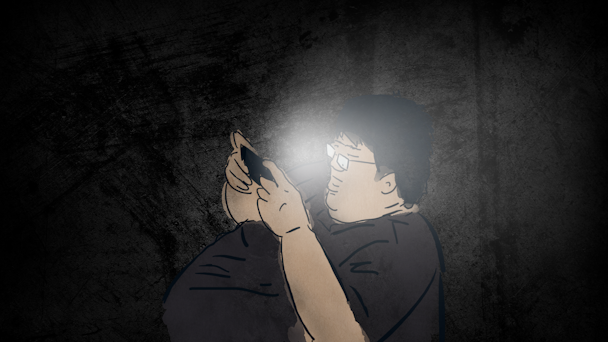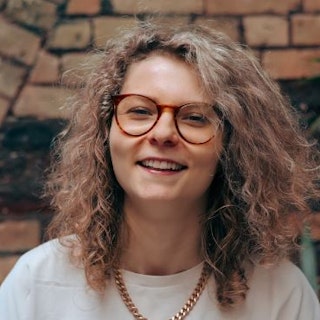Why the fuck are people watching TV on TikTok?
For The Drum’s latest Deep Dive, The Media Convergence, Flight Story's Pollyanna Ward wonders to what extent people are watching TV on TikTok and whether it is stealing audiences – or encouraging them.

We have a lively Slack channel at work where we share updates of things they’ve seen in our ever-changing world that might have an impact on brands today.
My contribution was a screenshot of the streaming service Peacock’s TikTok page with a Tweet (an X??) that asked, 'Is TikTok the new TV?’
Advertisement
This prompted me to ping out a poll on my Instagram Stories to see if ‘non-marketing people’ were really watching TV on the never-ending video app. Surprisingly, lots of people did - albeit not in the same way as settling down for a night of telly on the sofa, but they were quite happy to watch clip after clip of TV shows whilst lying in bed.
So what’s actually happening here: Is TikTok now replacing TV?
Is long-form content back?
Are attention spans increasing?
Let's find out.
Hang on, haven’t we been here before?
The Drum reported back in 2014 about the launch of Snapchat Discovery as a place to watch TV clips and news. Between 2018 and 2022, an impressive lineup of made-for-Snapchat TV shows was released with series including 'Endless Summer', 'Ryan Doesn't Know', and 'Dead Of Night'.
The series spanned a variety of genres from comedy to horror with a host of celebrity talent including Ryan Reynolds, Jaden Smith, and Addison Rae. This format has now been sunsetted.
Facebook also gave it a go with its Facebook Watch tab, giving advertisers another place to run ads alongside long-form original content including the popular, and at times controversial, Red Table Talk hosted by Jada Pinkett Smith. This has also been removed, with a generic ‘Video’ tab now in its place that bundles all its video content on the platform together. But perhaps most famously was the rise and fall of Quibi during the lockdowns of 2020 that we should all remember.
Advertisement
That start-up was supposedly here to change the way we all watch content with shows designed to be viewed in either portrait or landscape mode. It got a huge amount of investment ($1.75bn). Fast forward to six months later and the whole business shut down. The business claimed the lockdowns wiped out those windows of short engagement it would have benefited from.
So how has TikTok managed to rack up millions of views on TV shows that these other platforms have tried and failed at?
Because TikTok isn’t a social app, or a streaming app, it’s an entertainment app. During lockdown, TikTok even pushed its service on TV, arguably to capture the attention of advertisers who had unused TV spend to spare to showcase it was just as good as TV at capturing attention in a sound-on environment. Furthermore, it’s not built on a social graph, but built on a YOU graph; you are served content that is designed specifically for you. It doesn’t matter where the content comes from, or whether it’s a full-bleed vertical video or a half-size square recording, the literal naming of the For You Page (FYP) sends a message to users that this video is designed for you - and they haven’t been wrong so far right?
Recently, I was at a conference in Athens where one of the speakers shared that they push loads of content out from their clients’ accounts multiple times a day, with the idea being that the algorithm will find the right audience for them. An interesting approach, particularly when we think about how TikTok doesn’t timestamp the videos - so there’s no ‘expiry date’ on content, and it certainly doesn’t feel ‘out of date’ by the time it gets to your FYP.
Another strange phenomenon that has occurred for TikTok, which didn’t occur for the other platforms mentioned, is that the comments section of these TV clips is filled with thousands of comments from people sharing their own feelings, opinions, and fan theories on the show.
Before our media landscape was as fragmented, you could guarantee that the morning-after a TV episode had aired, the whole office would be chatting about it. But now, how often do you find yourself cycling through ‘Have you seen this one? No? What about this one?’, before it slowly dawns on you that the other person has completely different TV viewing habits to you.
TikTok appears to be the solution here. It doesn’t matter if the show is new or old, it attracts communities of people who all have a passion for the show. These comments don’t just stay on TikTok either, Jane Boulton of Airline fame has captured a whole new generation of viewers to the program to the extent she’s been featured on This Morning.
There’s another incidental consequence from this: TikTok benefits TV because people discover shows there and then head to their preferred streaming service to watch. A friend sent me a DM explaining that TikTok gives her the best bits so she doesn’t have to invest lots of time in a series that might never get interesting.
This leads me to my final discovery on my quest, the format of these TV clips. On the one hand, you can watch the entirety of Grey’s Anatomy via TikTok, but what really drives up the views is when a clip shows the best bits.
There are 2.7m views on a video of Ross and Rachel getting back together (from Friends for those of you too young to have watched it), 1.1m on a heartbreaking scene in Grey’s Anatomy, and Jane Boulton trying to board a passenger from a coffee shop has seen 1.5m views.
Staff writer Christopher Milazzo at The State Times comments: “The clips that are more likely to go viral are the scenes with the most suspense that keeps you on the edge of your seat.”
This brings us to the importance of creating content that earns attention. A good friend of mine runs a successful horse-riding brand, and I remember when her content started to gain traction, she shared that she looked at how the best content creators on YouTube and TikTok put together their videos and thumbnails.
To further back up this approach, there’s a great podcast episode from The Content Mines that shares the formula to Mr Beast’s YouTube videos, in which they break down how every scene change is a way to propel the user to the end. But the takeaway that is most important for brands is: ‘He sets up the entire premise for the whole video in the first seven seconds'.
Even if you don’t watch the rest, you get the message. This is exactly what is happening with these viral TV clips, they’re short, emotive, and capture a key moment that sends a message to those who see it that prompts them to take action (leave a comment, find the next video).
With all that said and done, it’s worth considering the value of a view.
As brand guardians, we want people to be aware of and remember our brand in buying situations; this requires our customers to give some attention to our ads. When you’re receiving reports from your media agencies, remember that the way views are counted vary, for example, TikTok counts a view as the moment it starts to play on someone’s feed whereas TV measures the quality of the ad delivery, the reach, and the business results that were impacted. One is better than the other, there's no getting away from that.
Achieving a true apples-to-apples comparison between TikTok and TV is hard, and based on the different attribution methods we’ve still got a way to go when it comes to fair reporting. I recommend keeping that in mind whenever you see someone talk about the 16m views achieved on a TikTok video: it’s a completely different ballgame. One that I believe will require more rigorous media planning and critical measurement in light of TikTok’s latest feature update: an auto-scrolling freed.
To conclude, during the course of writing this piece, Peacock has taken down the full episodes from its page. I’m unsure why, but my gut tells me that in the ongoing Hollywood strikes in the US, it probably didn’t go down too well to put out content with no residual pay for the writers and actors...

